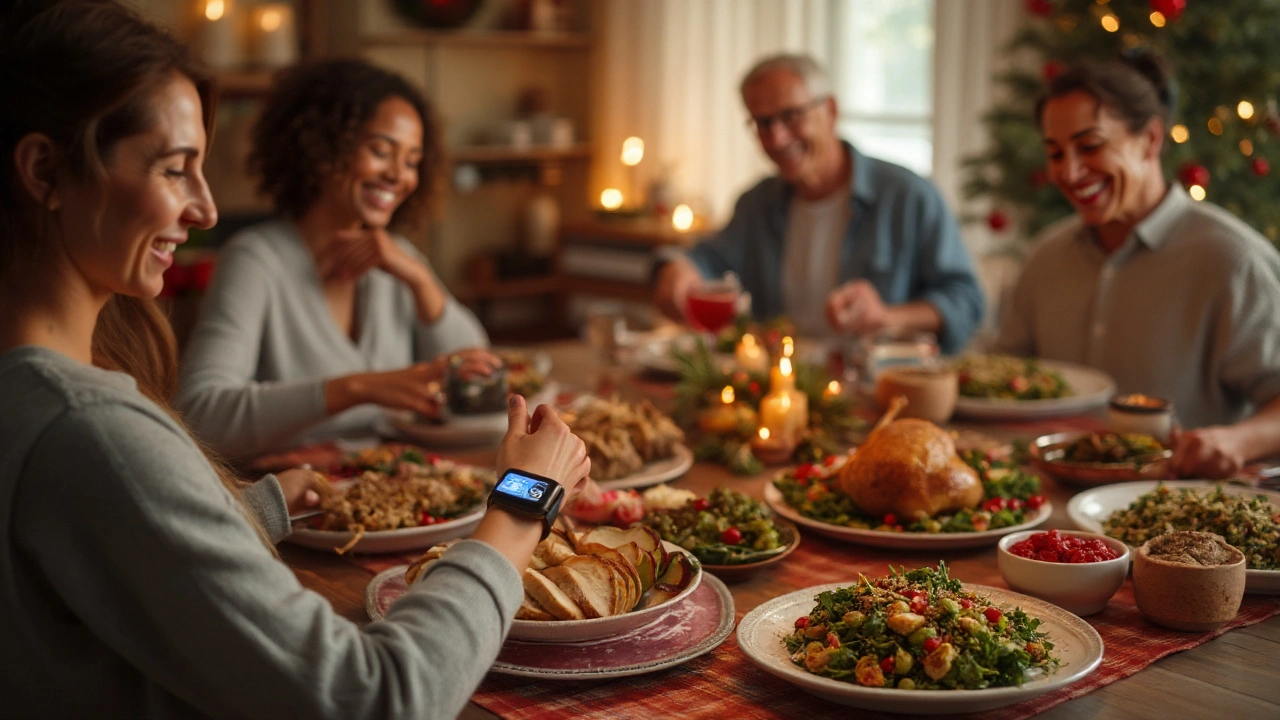
Type 2 Diabetes is a chronic metabolic condition characterized by insulin resistance and elevated blood glucose levels. It affects roughly 10% of adults worldwide and is managed through medication, diet, and lifestyle adjustments. During the holiday season, the usual routine is often disrupted, making type 2 diabetes holidays a common concern for patients and caregivers.
Festive gatherings bring high‑carb desserts, irregular meal times, and added stress-all of which can push glucose readings upward. A 2023 study from the Canadian Diabetes Association reported a 15% spike in emergency department visits for hyperglycemia between December and January. Understanding the underlying triggers helps you plan ahead.
Three pillars keep your numbers steady: monitoring, nutrition, and activity.
Effective monitoring starts with the right tool. The most common options are:
| Method | Typical Cost (CAD) | Reading Frequency | Accuracy (MARD) |
|---|---|---|---|
| Fingerstick Glucometer | $30‑$70 | Multiple times daily | ≈9% |
| Continuous Glucose Monitor (CGM) | $200‑$300 (sensor) | Every 5‑15 min | ≈8% |
| Smartphone‑linked Meter | $50‑$100 | On demand | ≈10% |
For holiday travel, a CGM offers real‑time alerts without the need for finger pricks. If you’re already using Metformin a first‑line oral medication, pair it with a portable meter to verify that meals aren’t causing unexpected spikes.
Carbohydrate Counting is a method that tracks the grams of carbs consumed at each meal. It works hand‑in‑hand with the Glycemic Index (GI), which ranks foods by how quickly they raise blood sugar. A practical rule: choose low‑GI options (GI<55) for the main course and reserve high‑GI treats for a small, measured portion.
Example: Swap a sugary cranberry sauce (GI≈85) for a fresh‑fruit compote sweetened with a splash of orange juice (GI≈45). You still enjoy the festive flavor but keep the glucose rise modest.
Even a brief 15‑minute walk after a big dinner can improve insulin sensitivity by up to 20%. If weather limits outdoor strolling, try a quick indoor circuit: 5 minutes of marching in place, 5 minutes of squat‑to‑chair stands, and 5 minutes of gentle stretching.
Stress releases cortisol, which nudges blood sugar upward. Incorporate mindful breathing or a 10‑minute guided meditation during holiday chaos. A 2022 University of British Columbia trial showed a 0.6% reduction in HbA1c after daily 5‑minute breathing exercises for six weeks.
Below is a quick‑reference guide for common holiday dishes, their carb content, and a healthier swap.
Portion control stays key. A handy visual: a fist equals roughly one cup of carbs; a palm‑sized serving of protein; a thumb of healthy fat.
Alcohol can cause both highs and lows. A standard drink (5oz wine, 12oz beer, 1.5oz spirits) typically adds 10‑15g of carbs and can blunt hypoglycemia warnings. If you choose to drink:
Low‑carb options include dry wine, spirits mixed with soda water, or a sugar‑free mocktail.

Visiting family often means staying in hotels or friends’ homes. Prep ahead:
If you notice any of the following, contact your healthcare provider promptly:
Early intervention can prevent hospital visits and keep the festivities enjoyable.
Here’s a realistic schedule you can adapt:
This routine blends monitoring, activity, and smart nutrition without feeling like a strict diet.
Understanding the broader context can deepen your management toolkit. Topics that naturally follow include:
Each of these areas connects back to the core pillars of glucose control and can be tackled after the holidays.

Yes. Choose low‑GI desserts, limit portion size (a bite‑size piece), and pair them with protein or healthy fat. For example, a small square of dark chocolate (70% cocoa) paired with a handful of nuts can satisfy cravings while keeping glucose stable.
Only under medical guidance. If you anticipate major dietary changes or increased activity, discuss a temporary dose tweak with your healthcare provider. Never change medication on your own.
For many, the real‑time data and alerts outweigh the cost, especially if you travel or have unpredictable meals. Some provinces offer insurance coverage for CGMs; check your health plan.
Limit intake to one standard drink for women and up to two for men per occasion, always with food. Monitor glucose before, during, and after drinking to catch any unexpected changes.
Indoor options work well: follow a short YouTube cardio video, do body‑weight circuits, or use a stationary bike. Even five minutes of movement after each meal can help control glucose.
Write a comment